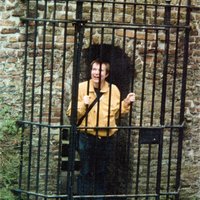- Department of Finnish, Finno-Ugrian and Scandinavian Studies
P.O. Box 24 (Unioninkatu 40)
00014 University of Helsinki
Finland
This article briefly presents a new handwritten version of the Lord’s Prayer in Finnish that is currently stored in the National Library of Sweden. It is found in a manuscript attributed to Georg Bruno and dated to the late 16th century.... more
This article briefly presents a new handwritten version of the Lord’s Prayer in Finnish that is currently stored in the National Library of Sweden. It is found in a manuscript attributed to Georg Bruno and dated to the late 16th century. Here we discuss its status and identify its sources. We also question some of the ideas of an earlier researcher of this manuscript.
Research Interests:
Research Interests:
Research Interests:
Research Interests:
Research Interests:
Research Interests:
Research Interests:
Research Interests:
Leivu has generally been connected with Võro and especially its Hargla dialect. However, this classification has always been based on superficial synchronic similarities rather than a rigorous diachronic analysis. Instead, closer... more
Leivu has generally been connected with Võro and especially its Hargla dialect. However, this classification has always been based on superficial synchronic similarities rather than a rigorous diachronic analysis. Instead, closer examination shows that Leivu is the earliest offshoot of South Estonian and that its similarities with Hargla Võro can better be explained by their geographical proximity.
Research Interests:
Research Interests:
Research Interests:
Research Interests:
Daniel Europaeus (1820–1884) was a Finnish eccentric who never graduated from the University of Helsinki but who was yet active in several different scholarly fields. While in his twenties he was a celebrated hero, later in life he became... more
Daniel Europaeus (1820–1884) was a Finnish eccentric who never graduated from the University of Helsinki but who was yet active in several different scholarly fields. While in his twenties he was a celebrated hero, later in life he became an outcast and even a laughing stock. Even so, he managed to achieve quite a lot, and the present article deals with no doubt his most unsung achievement, the Indo-Uralic hypothesis, which he first proposed in 1853.
